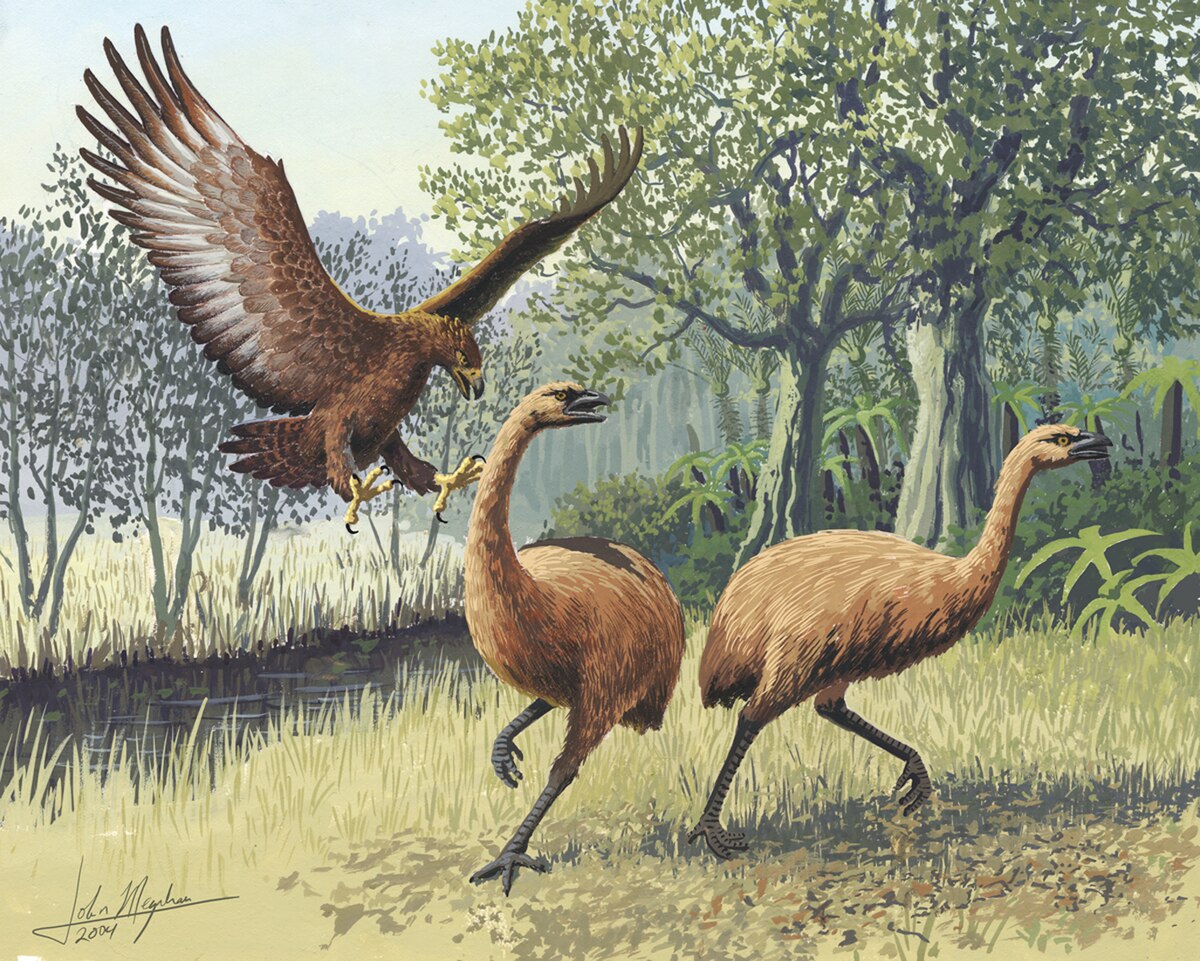In comparison the common ostrich is 2.8 meters tall and weighs a maximum of about 150 kg.
The Haast eagle which went extinct together with the Moa, preyed on the Moa. The Haast eagle weighed upwards of 14 kg. That is a great deal less than its prey. However, with fangs like daggers and a powerful beak, it was nevertheless able to mortally wound its prey.
With a full 230 kg of food, a single kill must have been able to feed several Haast eagles for days on end. The kill rate could have been low. Weak and vulnerable Moas may have been the Haast eagles' main targets.
The Moa and the Haast eagle must have been a perfect little eco-system.
The extinction of the two birds around the time that man first set foot on New Zealand has been attributed to man hunting down the Moa to extinction.
However, there is nevertheless something strange about the size of the two birds. The Moa was a lot larger than the biggest living land bird, and the Haast eagle was a lot bigger than the biggest living eagles of today. Steller's sea eagle with a maximum weight of about 9 kg is dwarfed by the Haast eagle in much the same way the common ostrich is dwarfed by the Moa.
While it is perfectly reasonable to assume that man put an end to the two birds by hunting the Moa to extinction, a question remains unanswered. Why are there no similarly big birds anywhere on our planet today?
By John Megahan - Ancient DNA Tells Story of Giant Eagle Evolution. PLoS Biol 3(1): e20. doi:10.1371/journal.pbio.0030020.g001, CC BY 2.5, Link

No comments:
Post a Comment